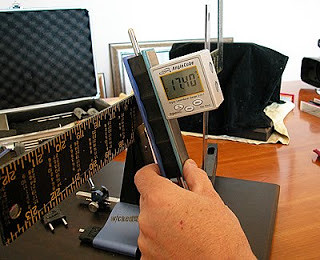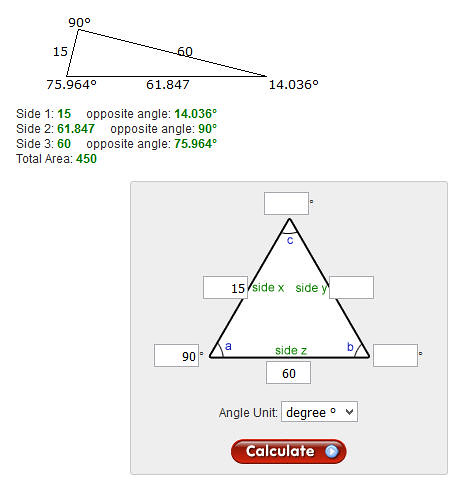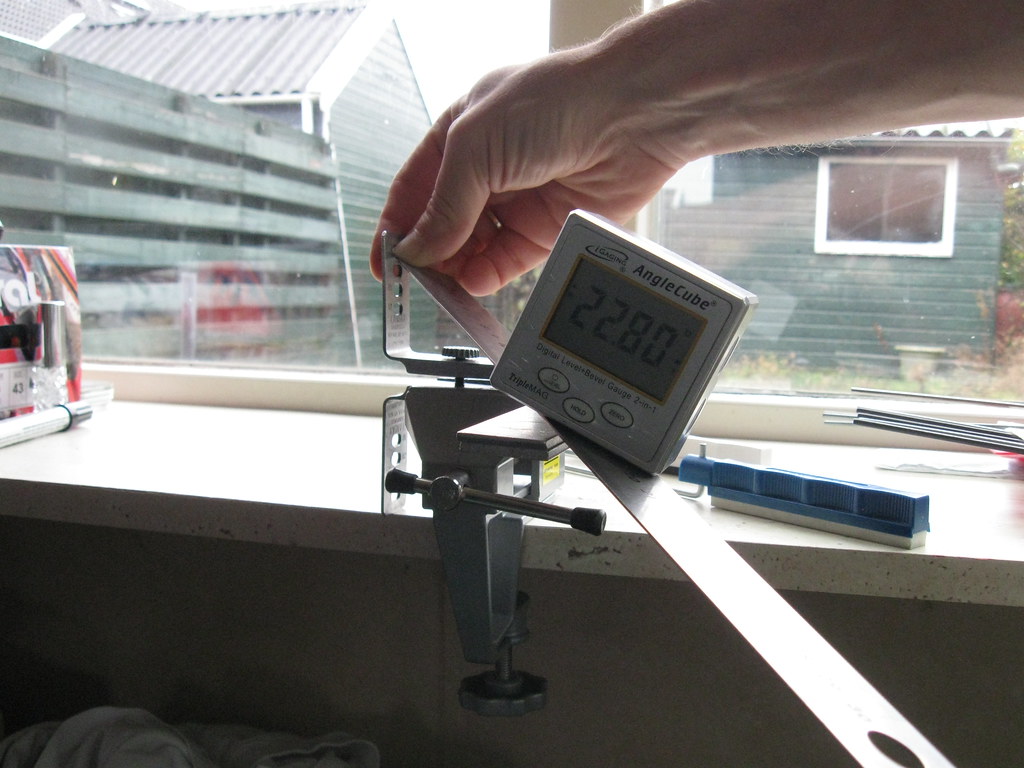This picture shows what I am talking about.
This is a sort of standing clamp (if the clamp stand up or lay down do not matter). The hight up to the top of the liner are 155 millimeter (mm).
A liner, 30 cm long, are clamped in the middle on the 15 cm mark on the liner. I have drawn 2 pivot points, one in 15 degrees and one in 25,5 degrees.
from the 15 degree pivot point up to the top of the liner on the 15 cm marking is: 159 mm. to the 20 cm marking is: 167 mm, to the 25 cm marking is: 188 mm and to the 30 cm marking is 219 mm. I have also drawn a belly and a tip of a knife blade. To the tip is the distance 205 mm. The edge angle is 15 degrees on the 15 cm marking on the liner. On the other markings the edge angle are lower then 15 degrees depending on that the distance are longer to those points.
From the 25,5 degree pivot point there is a distance up to the top of the liner on the 15 cm mark: 170 mm, then it changes to: 177, 197, and 227 on the 30 cm mark. The tip of the blade have 214 mm distance.
The degrees on the edge (where the pivot point are) do not matter, this rules by the law of physics. you cannot avoid it or go around it - if you have a fixed pivot point.
All sharpening tools work after this principle. EdgePro have a fixed pivot point - but you can move the blade instead of the pivot point - but then the blade is not fixed.
I made also a arc with 159 mm distance from the pivot point. An edge following this arc will get an exactly 15 degrees edge without any changes of the angle.
Lets say that the pivot point can move parallell to the edge (closer to you in this drawing). Then the edge angle do not change at all before you come to the belly. When you come to the belly you move the pivot point back a little to keep the correct distance, (there is a way to do this in a very simple way).
With a moving pivot point anyone can sharpen any edge up to a swords length - and keep the edge angle 100 % the same all along the edge. (I have made a tool with a moving pivot point - just to be able to do just this.
As I wrote above, a short blade gets small changes. If I shall sharpen a Bowie, machete or a sword, the changes in angle will be very big. This is important to understand - in my opinion.
I enjoy precision grinding. My tool Chef can change an edge 1/100 part of 1 degree - and then go between this two surfaces and hit them correctly without changing them. I enjoy this precision. I have now use at all of changing an edge so little - but that is the smallest change I have made with full control of the angle, this means that I can make, for example, 0,25 degrees change also - or any other angle - and that is for me useful. As you se, I am a grinding nerd

I have made this drawing in a program named Sketchup. It is a 3D program. You can download it from Google and it is free. If you like to have the drawing just contact me by PM and I send it to you. if you download Sketchup you can then se this drawing in 3D and see it from any angle. It is a very nice program to work with and simple to learn how to handle. You can also check that all distances are correct.
If you are good in math you can calculate in degrees, or part of degrees, the changes are- now when you have the distances.
Thomas














